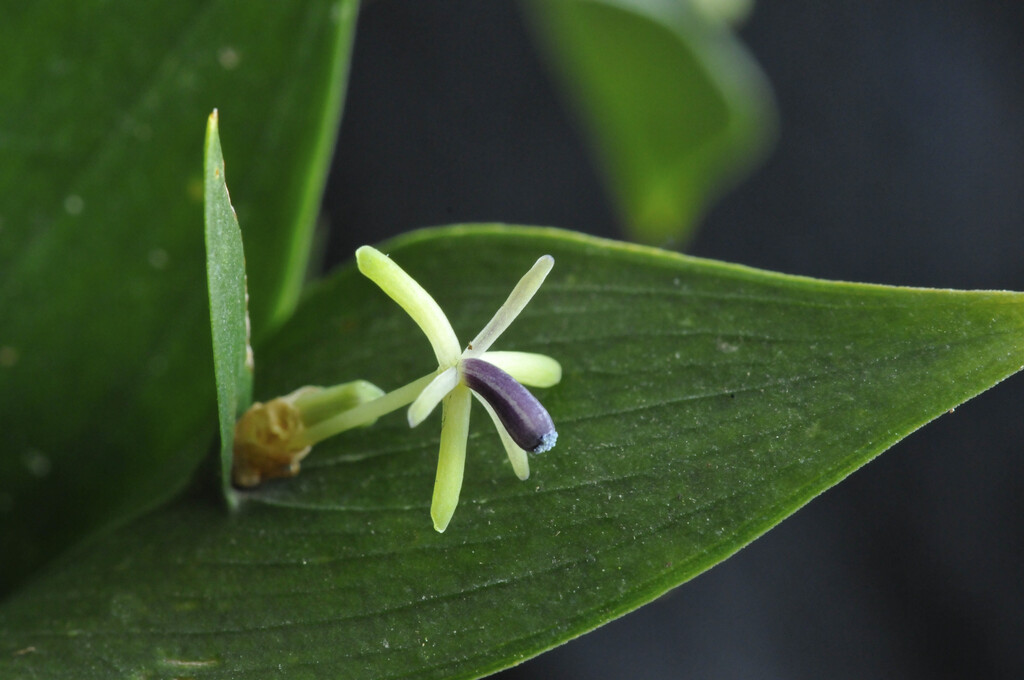Ruscus hypoglossum
spineless butcher's broom
A compact, evergreen shrub to around 50cm tall forming clumps of arching stems with pointed, glossy, bright green 'leaves' that are actually modified, flattened shoots called cladodes. Tiny, greenish-cream flowers are borne on the cladodes in spring and may be followed by bright red summer berries
Size
Ultimate height
0.1–0.5 metresTime to ultimate height
10–20 yearsUltimate spread
0.5–1 metresGrowing conditions
Moisture
Moist but well–drained, Well–drainedpH
Acid, Alkaline, NeutralColour & scent
| Stem | Flower | Foliage | Fruit | |
| Spring | Green Cream | Green | ||
|---|---|---|---|---|
| Summer | Green | Red | ||
| Autumn | Green | |||
| Winter | Green |
Position
- Full shade
- Full sun
- Partial shade
Aspect
East–facing or North–facing or South–facing or West–facing
Exposure
Exposed or ShelteredDrought resistance
Yes Hardiness
H5Botanical details
- Family
- Asparagaceae
- Native to GB / Ireland
- No
- Foliage
- Evergreen
- Habit
- Bushy
- Genus
Ruscus are rhizomatous evergreen subshrubs with flattened, leaf-like cladophylls bearing small pale green flowers, followed on female or hermaphrodite plants by glossy red berries
- Name status
Correct
- Plant range
- Europe to Turkey
How to grow
Cultivation
Will grow in almost any garden situation, except waterlogged ground, including dry shade
Propagation
Propagate by seed or by division
Suggested planting locations and garden types
- Low Maintenance
- Banks and slopes
- Flower borders and beds
- Ground cover
Pruning
Cut out dead stems to the base in spring
Pests
Generally pest-free
Diseases
May be susceptible to honey fungus in gardens where it is present but insufficient data to determine degree of susceptibility
Get involved
The Royal Horticultural Society is the UK’s leading gardening charity. We aim to enrich everyone’s life through plants, and make the UK a greener and more beautiful place.

